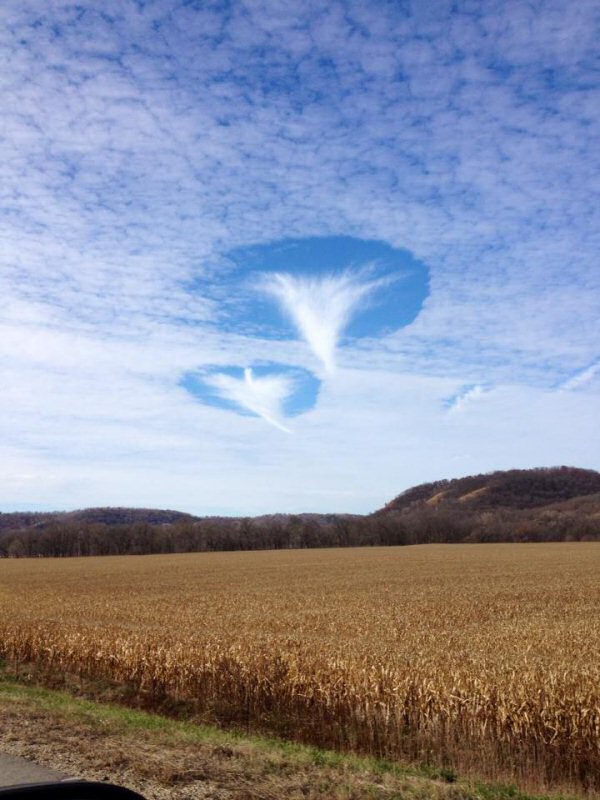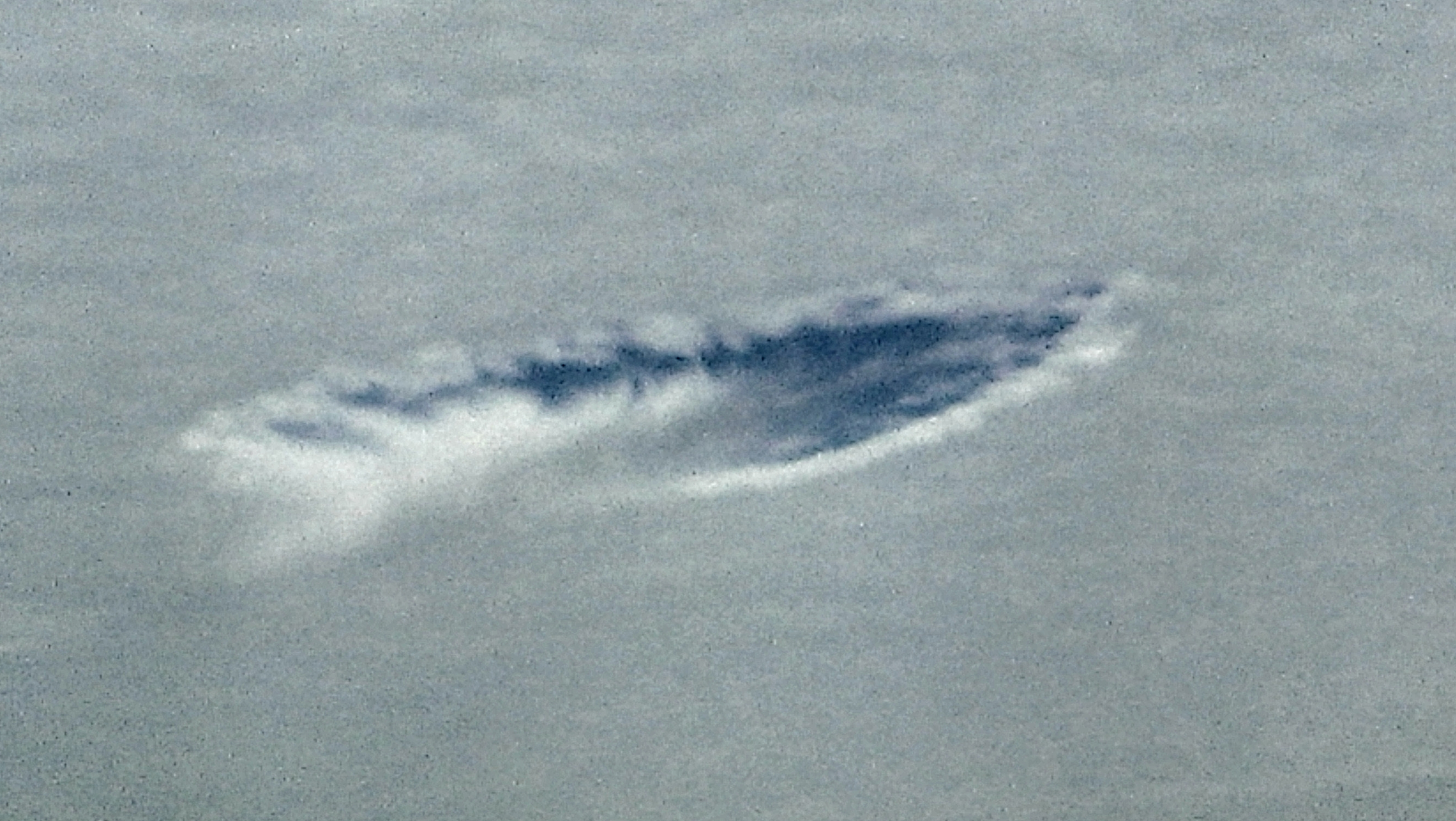Admittedly, this would have been a better picture had I not been running away from the portal to another universe that opened up in the sky over South St. Paul on Saturday afternoon.
Apparently, I wasn’t the only one to see it because the National Weather Service in La Crosse has been getting a lot of “what is it?” messages.
Alas, it’s not a portal into a land without political campaigns and dumb ads. They’re called “fallstreaks,” the Weather Service writes today.
High to mid level clouds, such as altocumulus, are often composed of tiny water droplets that are much colder than freezing, but have yet to freeze. These “supercooled” water droplets need a “reason” to freeze, which usually comes in the form of ice crystals. Planes passing through the cloud layer can bring these ice crystals.
Once the ice crystals are introduced, the water droplet quickly freeze, grow and start to fall. A hole is left behind, which will start to expand outward as neighboring droplets start to freeze.
Here’s one from Houston County that was submitted to the National Weather Service.

The Cloud Appreciation Society — it’s true, there’s a Cloud Appreciation Society — expands on the notion that aircraft may have something to do with their creation.
We already knew that, for the hole to form, the droplets in the cloud layer need to be ‘supercooled’. This means that they are at a temperature below 0˚ Celsius, but have yet to frozen. In fact, cloud droplets can and do often remain liquid at temperatures well below the freezing temperature of a glass of water down here on the ground. When in the form of tiny droplets, water needs a nucleus of some sort to be encouraged to freeze – a tiny particle of some sort that it can get started on. Without one of these icing nuceli present, droplets will resolutely refuse to freeze until the air temperature drops to as low as –40˚ Celsius.
But what gets the freezing started in one region of the cloud? The research has confirmed the long-held suspicion that an aircraft flying through the cloud can be enough to set off the freezing process. The expansion of the air as it passes over the aircraft wings and (for certain types of plane) over the blades of its propellers, causes it to cool. This momentary cooling can be enough to take the temperature down low enough for the droplets to start to freeze spontaneously, even though there aren’t enough icing nuclei around for the droplets elsewhere to freeze.
Some things you just can’t get around here in the summer.

